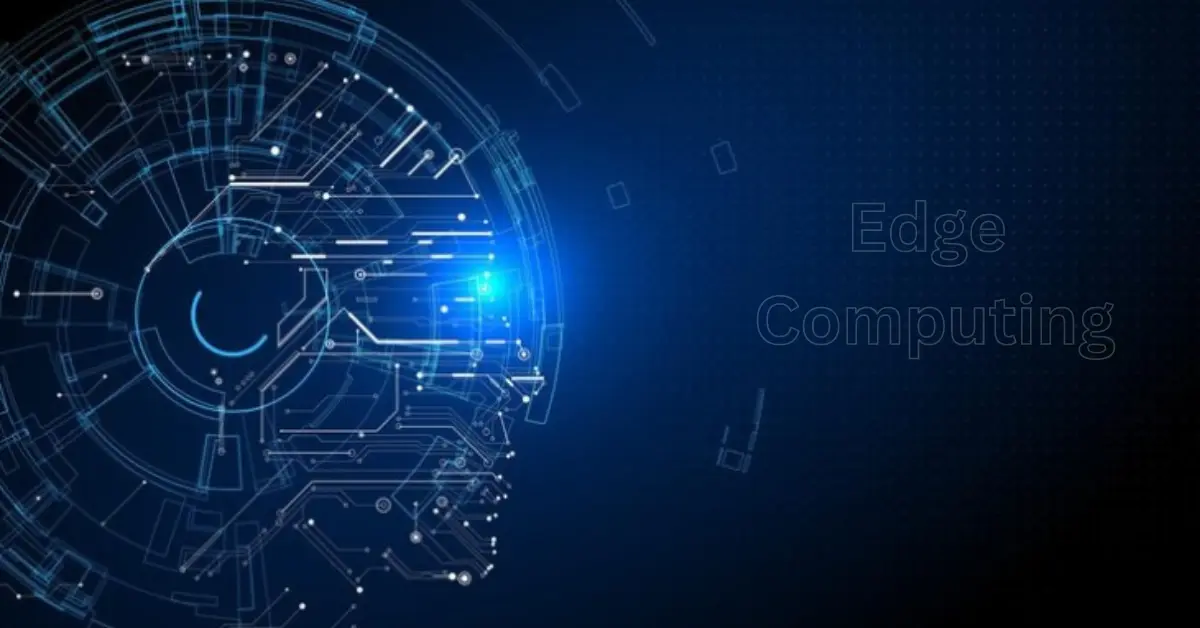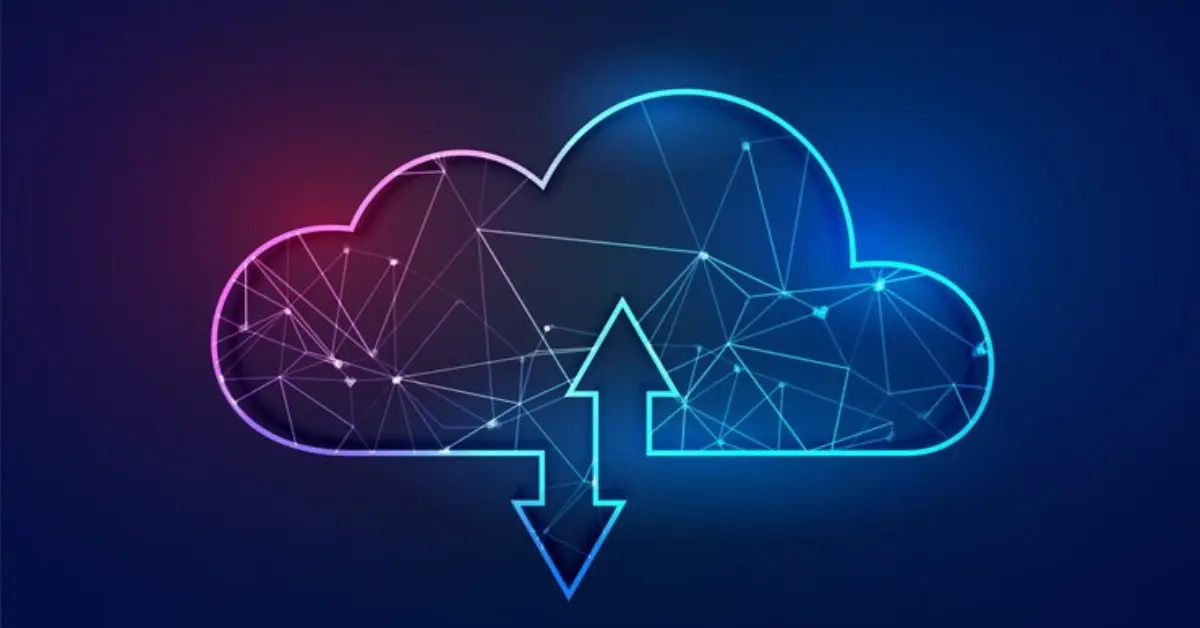In the ever-evolving landscape of technology, edge computing has emerged as a game-changer, revolutionizing how data is processed and managed. This paradigm shift is not just a fleeting trend but a fundamental transformation that’s reshaping industries, driving innovation, and redefining user experiences.
Future of technology:
Understanding Edge Computing
Edge computing refers to computing that’s done at or near the source of the data, instead of relying on a central data-processing warehouse.
Some key aspects to help you understand edge computing:
- Definition and Concept:
- Edge Computing is a distributed computing paradigm which brings computation and data storage closer to the location where it is needed, to improve response times and save bandwidth.
- The “edge” in edge computing refers to the literal geographic distribution of computing nodes. It’s at the “edge” of the network, meaning either physically closer to data sources or at a point in the network topology that’s closer to the data source.
- How It Works:
- In edge computing, data processing is performed by a device at the edge of the network or by a server situated nearby. This is in contrast to processing the data in a centralized data center or cloud.
- IoT devices are common edge devices. They collect data and, instead of sending it across long routes to data centers or clouds, process it locally or in nearby edge servers.
- Benefits:
- Reduced Latency: By processing data closer to the source, edge computing greatly reduces latency, which is vital for applications requiring real-time analysis.
- Bandwidth Savings: It reduces the amount of data that travels over the network, which can lower data transmission costs and reduce bandwidth usage.
- Improved Privacy and Security: Processing data locally can reduce the risk of data interception during transmission.
- Use Cases and Applications:
- Internet of Things (IoT): In IoT, edge computing allows for faster processing of data from sensors and devices, which is crucial in scenarios like smart cities, smart homes, and industrial IoT.
- Autonomous Vehicles: These vehicles generate and process large amounts of data. Edge Computing allows for rapid processing of this data, essential for real-time decision-making in autonomous driving. – Healthcare, Wearable health devices and remote monitoring tools use edge computing for real-time data analysis, improving patient care and timely medical intervention. – Retail: In retail, edge computing can process customer data locally for personalized shopping experiences and inventory management.
- Challenges and Considerations:
- Security: While edge computing can enhance data security, the increased number of devices and data points can expand the security perimeter, requiring robust security protocols.
- Management and Maintenance: Deploying and maintaining a distributed network of edge computing devices can be complex and resource-intensive.
- Integration with Existing Infrastructure: Integrating edge computing with existing IT and cloud infrastructure poses challenges in terms of compatibility and data synchronization.
- Edge vs. Cloud Computing:
- While cloud computing relies on a centralized system for processing and storage, edge computing distributes these functions to the edge of the network.
- Edge computing does not replace cloud computing but complements it. Many systems use a hybrid approach, where some processing is done at the edge, and more complex analysis is handled in the cloud.
- Future of Edge Computing:
- Growth with IoT: As the number of IoT devices grows, so will the need for edge computing to process the vast amounts of data these devices generate.
- 5G Networks: The rollout of 5G will significantly enhance edge computing capabilities, providing faster, more reliable connections for edge devices.
- AI and Machine Learning: Integration of AI and machine learning at the edge will enable more advanced analytics and autonomous decision-making capabilities.
Drivers Behind the Rise of Edge Computing
The rise of edge computing can be attributed to several key drivers, each playing a significant role in its increasing adoption across various industries.
Here are some of the primary factors:
- Increased IoT Deployment: As the Internet of Things (IoT) continues to expand, with more devices connecting to the internet, there’s a growing need to process data closer to where it’s generated. Edge computing facilitates this by processing data on local devices or nearby computing nodes, reducing latency and improving response times.
- Low Latency Requirements: Applications such as autonomous vehicles, virtual/augmented reality, and real-time analytics require real-time or near-real-time processing. Edge computing minimizes the latency involved in sending data to centralized data centers for processing.
- Bandwidth Constraints: Transmitting large volumes of data to centralized cloud servers can consume significant bandwidth. By processing data at the edge, only relevant, processed data needs to be sent to the cloud, thus conserving bandwidth.
- Data Privacy and Security: Edge computing can enhance privacy and security by allowing sensitive data to be processed locally, reducing the risk associated with data transmission and storage in remote data centers.
- Cost Efficiency: Reducing the amount of data that needs to be sent to the cloud can lower data transmission costs. Additionally, edge computing can reduce the need for more expensive, centralized computing resources.
- Advancements in Technology: Improvements in hardware, such as more powerful and energy-efficient processors, have made edge computing more feasible. Technologies like 5G also support faster, more reliable connections between edge devices and the network.
- Scalability and Flexibility: Edge computing allows organizations to scale their computing resources more flexibly. They can add edge computing capacity as needed without overhauling their central infrastructure.
- Increased Adoption of AI and Machine Learning: Many AI and ML applications benefit from being able to process data where it’s generated. Edge computing enables faster processing and decision-making for these applications.
- Resilience and Reliability: By processing data locally, edge computing can maintain operational functionality even when there are issues with the network or the central data center, ensuring better uptime and resilience.
- Regulatory Compliance: Certain regulations require data to be processed and stored within specific geographical boundaries. Edge computing can help organizations comply with such regulations by processing data locally.
- Industry-Specific Needs: Certain sectors like healthcare, manufacturing, and retail have specific needs that edge computing addresses effectively, such as real-time data analysis for critical decision-making.
As technology continues to evolve, these drivers are likely to expand and adapt, further integrating edge computing into the fabric of modern digital infrastructure.
Impacts of Edge Computing
Edge computing refers to the practice of processing data near the edge of the network, where the data is being generated, instead of in a centralized data-processing warehouse.
Various aspects of technology, business, and society:
Technological Impacts
- Reduced Latency: By processing data closer to its source, edge technology significantly reduces latency compared to cloud computing. This is crucial for real-time applications like autonomous vehicles, industrial automation, and IoT devices.
- Bandwidth Savings: It reduces the amount of data that needs to be sent back and forth between the cloud and the edge. This not only saves bandwidth but can also reduce operational costs.
- Improved Data Security and Privacy: Since data can be processed locally, sensitive information does not always need to be sent to the cloud, reducing the risk of data breaches.
- Enhanced Reliability: edge technology can provide more consistent performance even when network connectivity to a central data center is poor or interrupted.
- Resource Optimization: It allows for more efficient use of network resources by distributing processing tasks across various points in the network.
Business Impacts
- New Business Models: Edge computing opens up opportunities for new services and business models, particularly in industries that require real-time data processing, like manufacturing and healthcare.
- Cost Efficiency: Businesses can save on data transmission and storage costs by processing data locally and only sending essential information to the cloud.
- Competitive Advantage: Faster data processing and decision-making capabilities can provide businesses with a competitive edge, especially in industries where speed and agility are critical.
Societal Impacts
- Smart City Development: Edge computing is a key technology in the development of smart cities, enabling real-time processing of data from various sensors for traffic management, public safety, and energy efficiency.
- Healthcare Improvements: In healthcare, edge technology can facilitate remote monitoring and real-time data analysis, improving patient care and outcomes.
- Environmental Benefits: By optimizing data processing and reducing the need for long-distance data transmission, edge computing can contribute to energy efficiency and reduced carbon footprint.
Challenges and Considerations
- Security Concerns: The distributed nature of edge technology can create new security challenges, as data is processed and stored across numerous locations.
- Management Complexity: Managing and maintaining a distributed network of edge computing devices can be more complex than managing centralized data centers.
- Interoperability and Standards: Ensuring that different devices and systems can work together seamlessly is a significant challenge in edge computing.
- Technical Expertise: The deployment and management of edge technology solutions require specialized skills and knowledge, which can be a barrier for some organizations.
The Future of Edge Computing
edge technology refers to the practice of processing data closer to where it is generated, at the ‘edge’ of the network, rather than in a centralized data-processing warehouse. This shift is primarily driven by the increase in IoT (Internet of Things) devices and the need for real-time, low-latency processing.
Key Trends Shaping the Future of Edge Computing
- Growth of IoT and Smart Devices: As more devices become connected and smart, the volume of data generated at the edge of networks will continue to grow exponentially, necessitating more edge computing solutions.
- 5G Networks: The rollout of 5G will significantly enhance edge computing. The high speed and low latency of 5G networks make it ideal for edge technology applications, enabling more real-time data processing and analytics.
- AI and Machine Learning at the Edge: Edge technology allows for local data processing, which means AI algorithms can operate more efficiently and responsively. This is crucial for applications that require real-time decision-making, such as autonomous vehicles and smart cities.
- Enhanced Security and Privacy: By processing data locally, edge technology can potentially improve data security and privacy, as less sensitive data needs to be transmitted and stored centrally.
- Energy Efficiency and Sustainability: Edge technology can reduce the energy required for data transmission and lower the carbon footprint of cloud computing by distributing the load more evenly.
- Hybrid Cloud-Edge Environments: The future will likely see a more integrated approach where edge and cloud computing work in tandem, leveraging the strengths of both for optimized performance.
- Advancements in Edge Hardware: There will be continued innovation in developing smaller, more powerful, and energy-efficient hardware for edge technology applications.
- New Business Models and Services: edge technology will enable new services and business models, especially in industries like healthcare, retail, and manufacturing.
- Challenges in Standardization and Interoperability: As edge technology grows, there will be increased challenges in creating standards and ensuring interoperability among the diverse array of devices and platforms.
- Edge Computing in Remote and Harsh Environments: Edge technology will become increasingly important in remote areas or harsh environments, like offshore platforms or space, where central cloud connectivity is limited or unreliable.
Potential Impacts and Considerations
- Economic Impact: Edge technology can drive economic growth by enabling new technologies and services, but it also requires investment in infrastructure and skills development.
- Privacy and Regulatory Issues: As data processing becomes more distributed, it will be crucial to address privacy concerns and comply with regional data protection regulations.
- Digital Divide: There’s a risk that the benefits of edge technology might not be evenly distributed, potentially exacerbating the digital divide.
- Workforce Transformation: The rise of edge computing will create demand for new skills and roles in IT and data science, requiring workforce training and education.
Conclusion
The future of edge technology looks robust and full of potential, promising to transform various sectors by enabling faster, more efficient, and localized data processing.



